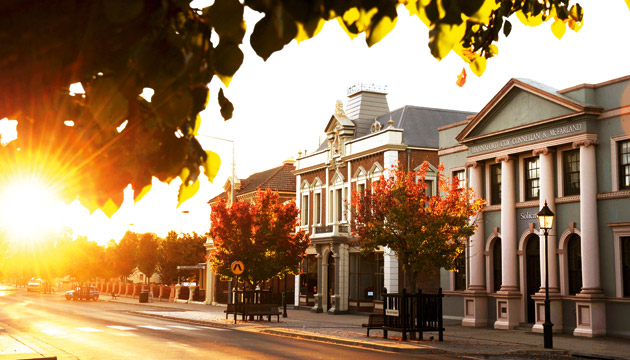Central New South Wales towns are banking on historic structures being a visitor drawcard.
Story and photos by Chris Pritchard
Kangaroos graze on a public lawn beyond trees fringing the main street. Plaques dot the edge of the grassy expanse, marking the locations of buildings that no longer exist. Hill End’s preoccupation with history has put it firmly on the map for a new class of tourists called ‘heritage visitors’.
Hill End – a blink-and-you’ll-miss-it cluster of houses, shops and a few B&Bs – began as a rambunctious fortune seeker’s magnet after gold’s discovery on the tablelands in southern New South Wales in 1851. It ballooned into a town of 8000 people – a catchment for 28 boisterous pubs, two newspapers, five banks and eight churches. But the gold rush withered in the early 1870s.
These days just 166 people inhabit Hill End. One church survives, St Paul’s Presbyterian, a small stone building whose congregants resist connecting to electricity, preferring night-time services by oil lamps.
Lucy White, destination development manager at Bathurst Regional Council, which includes Hill End, says visitor numbers are growing. “People say they’ve come for history – Hill End is a good example of a growing phenomenon,” Lucy says.
Domestic heritage visitors to New South Wales spent an estimated $4.4 billion during their trips last year – up 9.8 percent on the previous year. This includes an average expenditure of $957 plus a typical $273 a night per group on accommodation. Visitors to Bathurst’s Australian Fossil and Mineral Museum, housed in a historic former public school, have more than doubled in 12 years of operation, reaching 33,000 last year.
In Mudgee, history is best displayed along Market Street in the town centre and nearby. Old buildings have been lovingly transformed into restaurants, galleries, shops and offices. The former town hall, built 136 years ago, has been refurbished as the town’s library and incorporates a theatre for films and concerts, as well as serving as a venue for meetings and other functions. Roth’s, a former general store a few blocks away, has become a fashionable wine bar emphasising local drops.
This story excerpt is from Issue #110
Outback Magazine: Dec/Jan 2017










